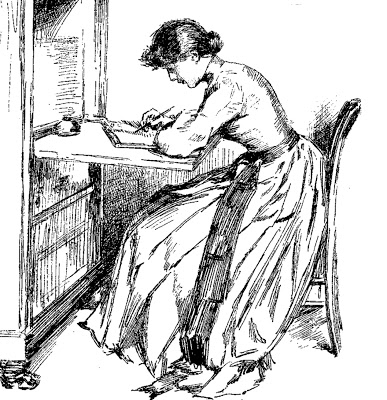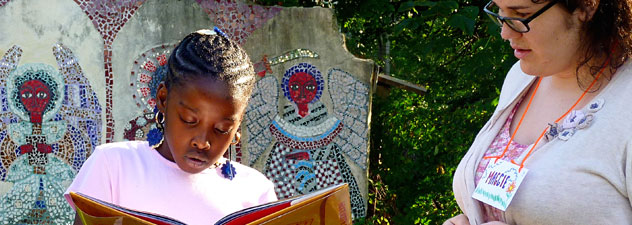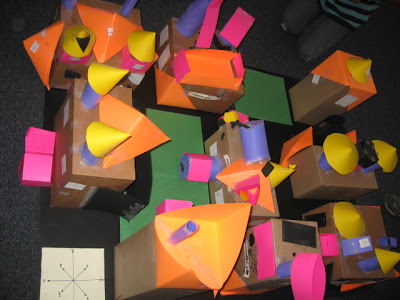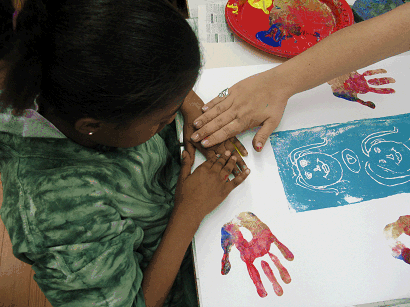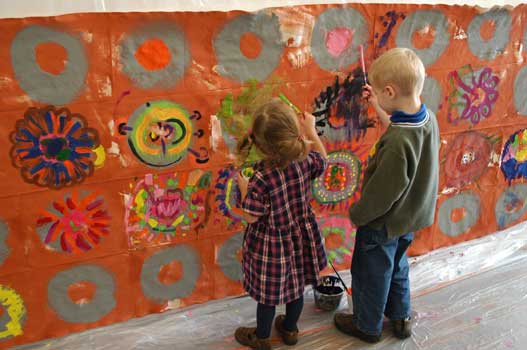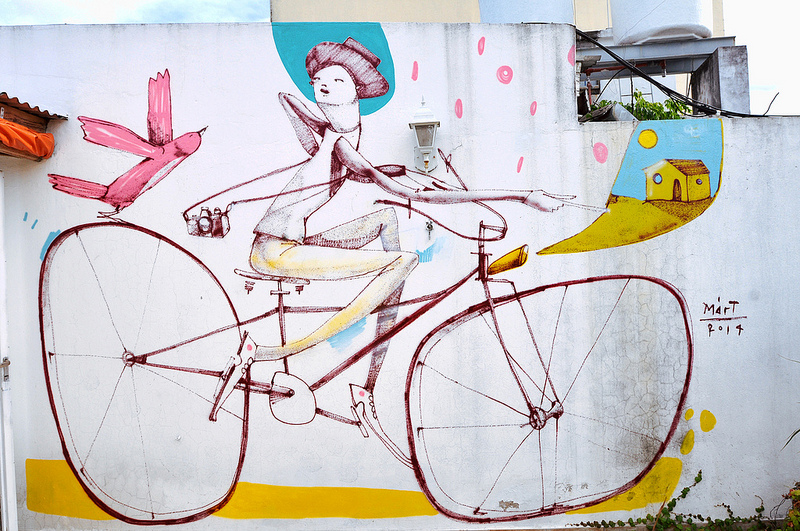by Mindy Fried | Aug 6, 2014 | arts, community, diversity, festival, human connection, music, organizing, porchfest, program evaluation, social science research, sociological imagination
![]()
For a couple of decades, I have been an “applied sociologist”, meaning that my sociology leaves the classroom and situates itself in organizational contexts. There are many ways that applied sociologists “do sociology”. For the most part, my work focuses on evaluating a range of programs and policies to help organizations get stronger and ultimately, bring in more funds so they can continue to do their good work. Applied sociology may be perceived by some as the step child of academic sociology. “Professor” is a far more classy title than Senior Research Associate or even, Wowza Evaluation Research Expert! But academic and applied sociology are equally good options; the choice to pursue one or the other has more to do with the job market, as well as one’s career goals and interests. That said, applied sociologists have fewer institutionalized steps along the career ladder to achieve “success”, and we certainly experience less institutionalized scrutiny. For better or worse, applied sociologists also don’t generally have a “family” of colleagues for life!
A lot of us “applied folks” are happy with our choice. The work is challenging, and the potential to improve programs and policies that improve people’s health, education, incomes and more is satisfying. Many of us also love to teach, but generally when we do, we’re on the lowest rung of the totem pole as adjuncts, with low wages, no benefits and depending on the institution, no status, even if one is a stellar teacher whose students adore you. But unlike adjuncts who are scraping a living together teaching multiple single courses, we may choose to teach a course, without fully depending on this income.
This spring, I discovered another way to put my sociology into action, when I joined with a friend to organize a neighborhood music festival on porches, called “Jamaica Plain Porchfest”(www.jpporchfest.org).
My type of applied sociology had, for the most part, been stuck in a room, or on occasion, at an event or rally. But I felt ready to break out. While I have been evaluating arts-based programs for a number of years, I found that I could bring my sociological eye to designing and implementing this participatory arts-based musical event. Luckily, I was partnered with an old and dear friend who brought the same sensibility and perspective.
Our sociological eyes went into motion from the very beginning of our planning, as we identified the “outcomes” we wanted to achieve for this event. We live in a community that is considered very diverse, in terms of race/ethnicity, class and sexual/gender orientation. But in reality, the community is very divided. There is a “Latin Quarter” which houses Cubans, Dominicans, Puerto Ricans and Central Americans; there are public housing developments that cloister poor people in large high rises; there are new mixed-income housing developments; there are sections of “town” that are entirely working class, and others that are entirely middle class. Our goal was to bring the various strains of the community together – bridging race/ethnicity and class – using music as the vehicle.
The phenomenon of “porchfests” is not new. The first one was organized in Ithaca, New York in 2007, and now there are 20 of them in cities and towns throughout the U.S., including Tucson, Napa Valley, Boulder, Buffalo (my home town!), Salt Lake City and in Somerville, Massachusetts, the porchfest that initially inspired us. From the looks of the incredible photos on each of their porchfest websites, we can see that they are joyous events that build community. From our conversations with the Ithaca and Somerville porchfesters, we also know how successful they are in promoting community bonding, as people come out on the streets to enjoy music together.
In contrast to some of the neighborhoods where other porchfests take place, around half of Jamaica Plain’s residents are people of color, including 25% Latino, 14% African-American, and 4% Asian, and 50% are white. Our commitment was to promote bridging and bonding, by pursuing three strategies: include a diverse range of musicians in terms of their racial/ethnic backgrounds as well as their musical genres; locate and include porches throughout the neighborhood where musicians can play; and engage and bring out diverse audiences. We hoped that these strategies would help to overcome some of the “tri-furcation” or “quadri-furcation” (!) in the ‘hood.
Initially, we created a Facebook page with a call for musicians and porch hosts. But a lot of people don’t go on Facebook, including 27% of online adults who don’t use social media, and another group of people defined as Facebook “resisters”.
So we reached out to local non-profit organizations, some of whom serve youth, others who manage low-income housing, others who coordinate small business activity, and yet others who run programs around maintaining a beautiful, large park in one of the neighborhood’s low-income neighborhoods. We also reached out to students at a highly renowned local music college. We even “scouted” musicians, sometimes at a local park or other venue, as well as musicians we just heard of through friends.
My organizing partner and I started with the idea that we’d do a “pilot” event, with three bands and three porches. But if were to stay true to our goals, we needed to do more than that. Ultimately, we had 60 bands sign up, and enough porches committed so that two bands could play on each porch. We spent hours poring over the mix of bands and porch hosts we would match, focusing on bringing together a mix of people from diverse backgrounds, by race/ethnicity, gender, and where possible, class. In the end, diverse bands and solo musicians shared a stage – aka porch – hosted by a third party who generously offered her/his porch.
We had been informed that one of the other porchfests almost got shut down one year because there were crowds of people roaming the streets, obstructing traffic and trashing neighbor’s lawns. So we created a tiered structure, in which each porch had a “Porch Fun Manager”, each cluster of porches in a particular part of neighborhood had a “Cluster Manager”, and the overall event had two “Network Managers” (me and my partner), who kept an eye on the whole picture. Organizational sociology in action…
While the two of us organized this event, we realized that we were operating within the construct of social institutions that needed to be privy to our plans, offer advice, and inform us of any limitations. So we met with officials from the City, from the police, and from a neighborhood services department that does city permitting. (We were committed to NOT have permits for each porch! We didn’t have the budget and we didn’t want to deal with the bureaucracy.)
![]() And did I mention that we had NO budget whatsoever? This was one of the appeals of the event. Nothing commercial. No “brought to you by”, banners, logos or even food trucks! We received a few in-kind donations: one from a friend, another from the City of Boston which paid for printing colorful maps of the porch routes to be used on the day of the event, and another from a printer who didn’t charge us for printing postcards to announce the event. For many people, the fact that JP Porchfest was commercial-free was a breath of fresh air.
And did I mention that we had NO budget whatsoever? This was one of the appeals of the event. Nothing commercial. No “brought to you by”, banners, logos or even food trucks! We received a few in-kind donations: one from a friend, another from the City of Boston which paid for printing colorful maps of the porch routes to be used on the day of the event, and another from a printer who didn’t charge us for printing postcards to announce the event. For many people, the fact that JP Porchfest was commercial-free was a breath of fresh air.
So how did it go? On the day of the event, we had 7,000-8,000 people roaming throughout the neighborhood listening to music, and hundreds showed up at a local restaurant, Bella Luna Restaurant and Milky Way Café, for an after-party which served $5 all-you-can-eat pizza! Anecdotally, it seemed that everyone loved the event from the audience to the musicians to the porch hosts.
But a good “action sociologist” can’t just leave it there! We needed to evaluate the impact of the event. In order to count the numbers in attendance, we used porchfest stickers, and had intended to count the leftovers to gauge the size of the crowd, except we ran out of stickers in one hour! We consulted an audience researcher on how to calculate the final numbers, and it’s her figures – 7,000-8,000 – that we are citing.
We also distributed very short surveys with a few questions that would help us learn what worked and what didn’t work, as well as to identify the demographics of porchfesters.
Nearly 100% reported that the event was excellent or very good (we’re still working on analyzing this data). In addition, we had two sociology grad students from Brandeis University (my alma mater) traversing the event and interviewing participants about their experience.
![]()
And we queried musicians and porch hosts to provide more detailed feedback on their experiences performing at JP Porchfest, and learned that they made great connections with the other band with whom they shared their porch as well as with their porch hosts. They were pleased that they were able to add people to their mailing lists and increased their CD sales. We also heard that small businesses had increased sales. One of our colleagues and friends from Hyde Square Task Force, a JP youth leadership organization, conducted her own short survey to see if business picked up in the “Latin Quarter”, and interestingly, small shops like the local beauty shop and local rotisserie chicken take-out place increased their business by anywhere from 100-400%!
Finally, we wanted to document the event, creating a team of professional filmmakers who shot the event and will produce two videos. One is a documentary about JP Porchfest that centers on three narratives: a long-time Latina political activist who had just moved into affordable housing and wanted to use porchfest as a way to unite her racially divided neighborhood; a veteran rocker musician who writes songs about JP and is a staple in the ‘hood; and a group of youth leaders from a local non-profit organization who were accompanied by two filmmakers who documented their response to the event and the different types of music. The other is a 5-minute how-to video, which will be accompanied by a training guide that we write, in order to help other communities produce their own porchfests!
My organizing partner and I were initially worried that no one would show up, and then after the event, we worried that we would experience a post-event malaise. But we have been disproven twice! We are now planning JP Porchfest 2015, this time knowing a lot more than what we knew before we started. Soon we’re going to launch a Kickstarter campaign, and Bella Luna/Milky Way has offered us their venue for two fundraisers.
In the end, we determined that we had done a pretty good job, maybe even a really good job! While roughly one-third of our musicians were people of color, we want to increase the diversity of the audience, and we are developing a strategy to do so.
In a follow-up conversation I had with Ayanna Pressley, a brilliant African-American City Councilor who spoke at the event, I lamented that the audience wasn’t as diverse as we wanted it to be, and she told me, “you are acting like a woman!” I was startled. What did she mean? She told me that the event was a great success, but I was focusing on the negative. “We’ll work on that for next year”, she reassured me.
Photos/Video:
1. Woman doing limbo at Nate Smith House, affordable housing for elders. Band was Tempo International Rhythm Section.
2. Sterling Rhyne performing at home of Betsaida Gutierrez, housing activist. Photo credit: Sam Sacks.
3. JP Porchfest banner, created by Hyde Square Task Force Youth Leaders
4. Damn Tall Buildings. Photo credit: Damn Tall Buildings (selfie!)
5. The Amy Hoffman. Photo credit: Jane Akiba
6. Guts and Buttons. Photo credit: Sue Dorfman
7. Cornell Coley and Hyde Square Task Force. Photo credit: Jane Akiba
8. Filmmakers planning Porchfest videos
9. Son of Chris Antonowich, Riding Shot Gun. Photo credit: Sue Dorfman
10. Video, Rick Berlin and Nickel and Dime Band: “I Love My Street”
by Mindy Fried | Mar 12, 2013 | arts, arts education, AWP conference, creative writing, loss, sociological imagination, women and work, women artists
Writing is a solo act, but for those in attendance at the conference of the Association of Writers and Writing Programs, or AWP (https://www.awpwriter.org/) this past weekend, you’d think it was one big party, with over 12,000 people moving through the sterile hallways of Boston’s massive Hynes Convention Center to attend hundreds of sessions. I had been forewarned that this event was downright overwhelming. So before I stepped foot into the Hynes, I carefully studied the program, selected sessions that fit my criteria, and found out exactly where they were physically located. Getting lost in the Convention Center was not on my agenda! As it turned out, this surgical approach served me well.
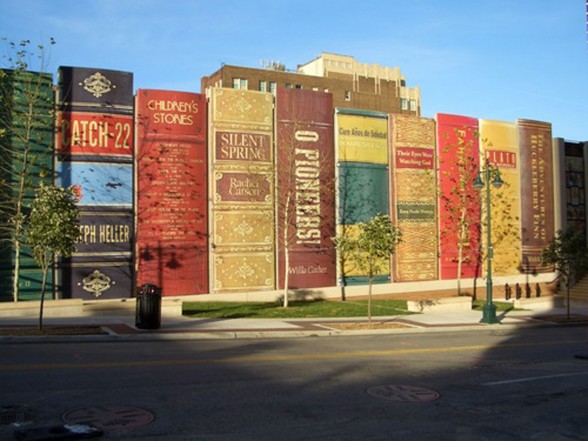
In one day, I managed to attend five sessions, chat with five random strangers, purchase an energy bar for nearly $5, and wander around the book fair where I was invited by at least five non-residency writing programs to look at their literature. I spoke with five or so small presses about their books, and was also accosted by a woman selling a weeklong “writing trip” to Paris, which was, in sum, a total rip-off. Of my small sample of informal interviewees, a few were undergraduate creative writing majors who were totally blown away by the panoply of rich resources in one place; one was an art history professor and another was a writing professor.

But I wasn’t there to make friends, although later I joined the Women’s Caucus of the organization (yes, there is gender bias everywhere!). I was there because I’m writing a memoir about the experience of caring for my dad in his final year of life, in which I am inter-weaving my family’s experience of political persecution, the FBI and more. I wanted to hear published authors talk about their experience writing memoirs, and to garner some tips about the process of publishing this type of book.
Here are a few gems that I got from the conference:
In a panel called “The Art of Losing”, authors talked about how profound personal loss fuels their writing. One of my favorite speakers on this panel was Jennine Capó Cruce, author of How to Leave Hialeah (http://www.jcapocrucet.com/), who said that she was told that she shouldn’t write from anger. But as she wrote her book, she saw rage as her source, and while writing her book, recognized that underneath her rage was grief.
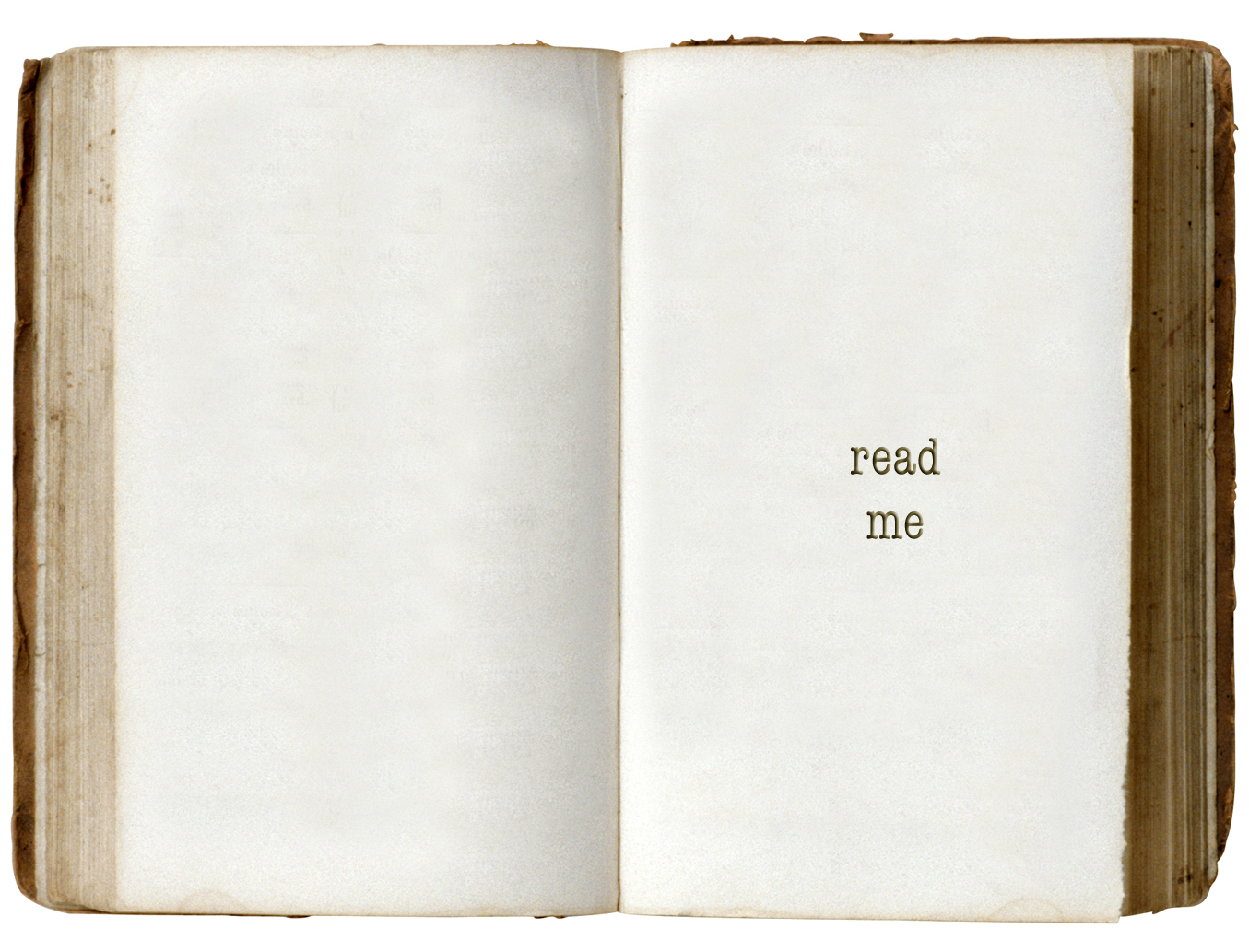
In a panel called “How Do You Know You’re Ready?”, novelists shared stories about manuscripts they either sent to agents too soon or had locked in drawers, never to see the light of day. I realized that the question of when a book is complete is a universal question. The panelists seemed to agree that knowing when you’re done writing a book is a “visceral thing”. I was touched that the panelists also welcomed attendees to approach them with questions at the end of the session. I asked novelist Dawn Tripp (http://www.dawntripp.com/) for suggestions about making a “pitch” to an agent. She offered me a few tips, including “make it short and to the point”. And another panelist, Kim Wright, author of Love in Mid-Air (http://loveinmidair.com/), added that it’s important to maintain the voice of the book when you’re trying to get others interested.
In a session called “Memoir Beyond the Self”, panelists talked about the importance of writing from one’s personal experience and broadening it to reflect on cultural implications. Travel writer and journalist, Colleen Kinder (http://www.colleenkinder.com/Colleenkinder/home.html) said, “personal essays have to be brave”, and she talked about the importance of “braiding” and “weaving” different strands of a story together. In describing this braiding and weaving process, Leslie Jamison, author of Empathy Exams (http://www.graywolfpress.org/Latest_News/Latest_News/Leslie_Jamison_wins_Graywolf_Press_Nonfiction_Prize//) said that “something in one sphere poses a question that another sphere can answer”. That intrigued me.
In a session called, “It’s Complicated: Memoir-Writing in the Political Sphere”, Melissa Febos talked about her book, Whip Smart, in which she wrote about her three years as a dominatrix while attending a liberal arts college in New York City (http://melissafebos.com/). Kassi Underwood talked about her book, A Lost Child, but Not Mine (http://www.nytimes.com/2011/07/31/fashion/a-lost-child-but-not-mine-modern-love.html?pagewanted=all), which chronicles her experience of having an abortion and then encountering her ex-boyfriend who was now a father. And Nick Flynn described the writing of his book, Another Night in Suck City about seeing his estranged father in the homeless shelter where he worked. The book was later turned into a film called, “Being Flynn” with Robert DeNiro and Julianne Moore. Talk about star struck!
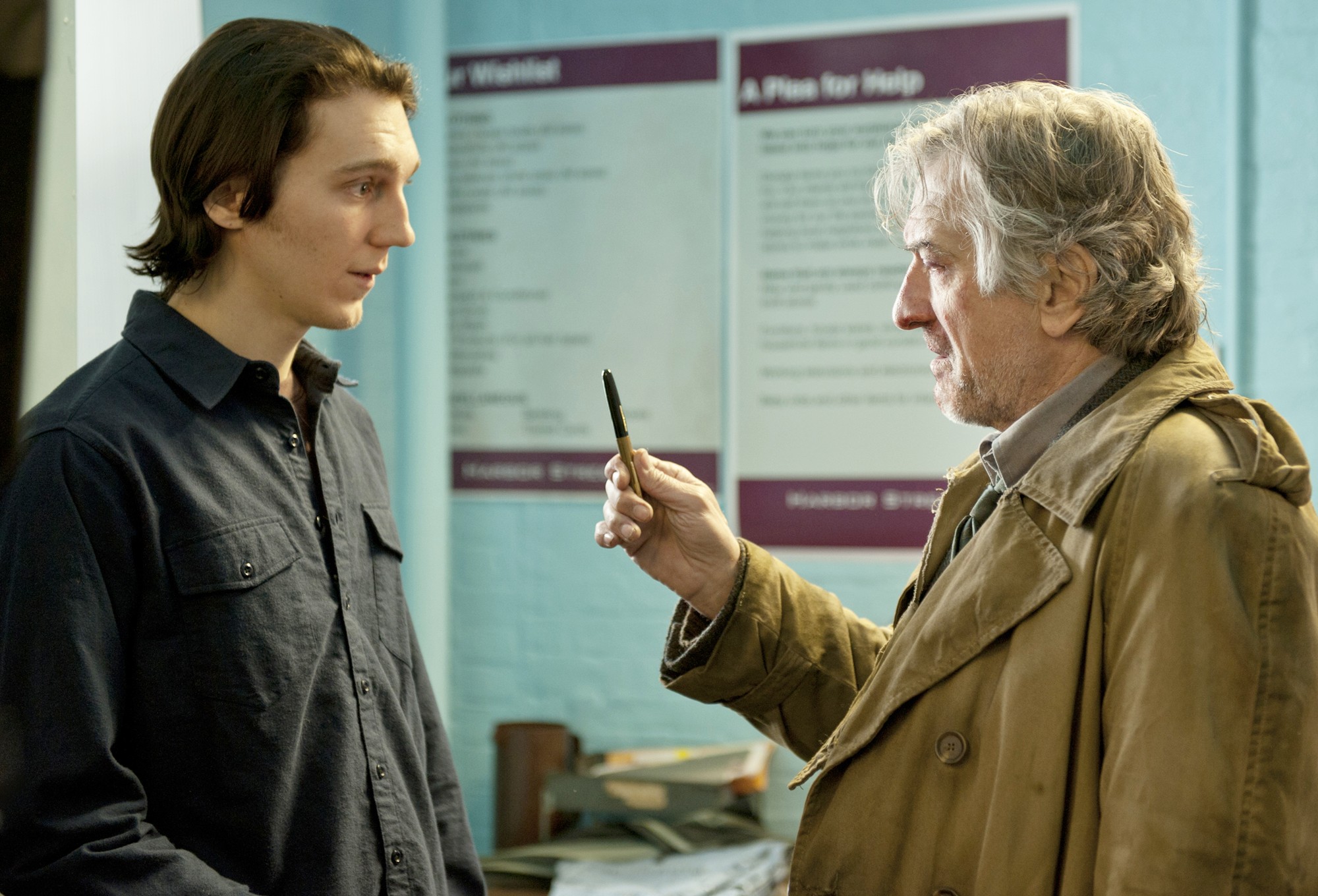
In a session called “Poetics of Fiction in/at Buffalo”, three writers read from their work about my poverty-stricken, yet vibrant hometown of Buffalo, New York. Ted Pelton (http://www.starcherone.com/ted/) began with this poem: “Buffalo Buffalo, Buffalo Buffalo Buffalo…”, saying that no other city can be a noun, verb and adjective. And Buffalo writer of Buffalo Noir, Dmitri Anastasopoulos (http://www.akashicbooks.com/catalog-tag/dimitri-anastasopoulos/), brought the experience full circle for me, when he said, “Buffalo is all about loss”.
The conference had a commercial element as well: In a so-called “Book Fair”, the small presses are there to entice writers, as are the creative writing programs and artists’ retreats. But one of my favorite booths in the exhibition hall was run by 826 National, a nonprofit organization that runs eight writing and tutoring centers around the country, aimed at helping at-risk youth find a voice to tell their stories (http://www.826national.org/). And who knows? Perhaps these young people will be the authors of tomorrow, and future attendees of this chaotic but enriching experience that is AWP…
by Mindy Fried | May 8, 2012 | arts, depression, education, finding work, graduating from college, making choices, unemployment, women and work
As our daughter goes into her final year of college, I have begun to feel a sense of trepidation about what comes next. The seniors I taught this past semester are already going into panic mode as they face a very uncertain future. Regardless of all the internships and community service experiences they are accruing, there’s no avoiding the dour statistics for young college graduates. When one student came to me, asking for advice about applying for a consulting job that was way beyond her reach, I found myself counseling her about the virtues of working in a coffee shop. So what if she’s an international relations major!
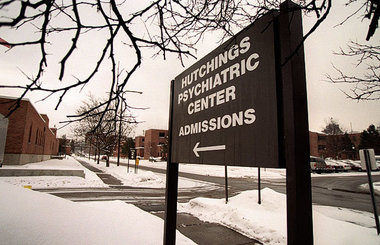
My first “real” job after graduating college was working in a state psychiatric hospital. This seemed like a “natural” place to be, since one whole side of my family was riddled with serious psychiatric disorders. Between an aunt with agoraphobia who never left her house, an aunt and an uncle who had “manic-depression” (now called bipolar disorder, a much more “respectable” name), and a mother who struggled with clinical depression and alcoholism, I was quite at home working in an institution for people with severe mental health problems.

I had been a dancer for many of my young years, and my professional goal – if one could call it that– was to somehow combine my interest in helping people with my passion for dance. I lucked out, since the field of dance therapy was just emerging, and one of the first certified dance therapists in the U.S. was willing to train me during my senior year of college. When I graduated, the state psych hospital was hiring tons of young college graduates. This was the early ‘70s, when thousands of patients, people who had spent years, sometimes decades, living in inside the walls of state hospitals, were released into the community in a move to “de-institutionalize” them. The motive was humanitarian, but the upshot for many of the patients was downright cruel. Nonetheless, it did mean that a lot of my friends and I had jobs.
I was hired as the institution’s dance therapist – and worked with people who were still living “inside” the institution, as well as out-patients that were being transitioned into a day treatment program. I fell in love with schizophrenics who were smart and spoke in metaphors that seemed poetic and deep. Because I was a professional dancer in a mental hospital, many of the institution’s rules did not seem to apply to me. Or at least that’s what I thought and how I behaved… More than once, I led a group of patients in a snake line through the hallways, and we seemed off-limits to criticism, as this “crazy” activity was “therapy”! It felt downright revolutionary!
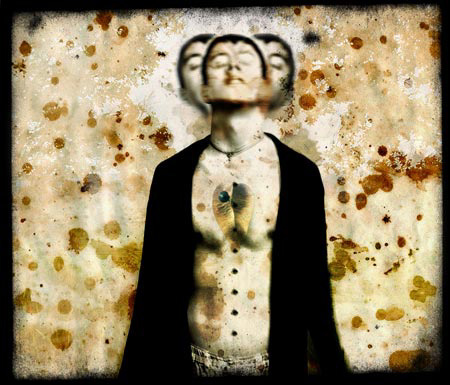
While this experience – working in an institution – wasn’t where I “landed” professionally, it was nothing short of a profound experience. I will never forget one of my out-patients, a diminutive woman named Ruth, who had spent her entire adult life imprisoned in the psych hospital. Ruth held her body like a tight fist, and stood all day, rocking rhythmically back and forth. I still feel teary when I think about her. There was another man who is seared in my mind: a tall, broad gentleman in a perpetual cowboy hat who people called “the Captain”. He was a man of few words, and those words were garbled, but he had a jovial demeanor. One of my most glorious days with him was when I took him for drive in the country, with two other patients. Outside it was minus forty degrees; but inside the car, with sun shining through the windows, it felt warm and protective. He said little throughout this drive, just smiled…

By the time I had been hired to work as a dance therapist at the state psych center, sociologist Erving Goffman had already published his seminal book Asylums: Essays on the Social Situation of Mental Patients and Other Inmates. One of Goffman’s greatest contributions was his critique of what he called “total institutions”, which included mental hospitals and prisons. Goffman argued that total institutions had a high degree of regimentation, and an elaborate privilege system. He described relations between staff and patients (or inmates) as caste-like, with detailed “rules” of deference and demeanor. One of the my favorite co-workers at Hutchings, a friendly and clever guy named Willie who was the janitor, surely understood Goffman’s analysis when he changed his first name from Willie to “Doctor”. Whenever anyone wanted his services, they would yell “Doctor” and he came running with a smirk on his face.
I knew nothing of Goffman while I was working in an institutional setting. But now, as I reflect on my first post-college job, and after studying this brilliant sociologist in graduate school and using his analyses in a class I now teach about the sociology of aging, it all comes back to me. First, I lived what Goffman described and then I was able to understand his theoretical frameworks, drawing upon my own experience. As my father used to say, everything we do in life accrues and has meaning. This has to be true, as well, for college students who are graduating to a lousy economy and a dearth of employment opportunities that “fit” with their majors.

Despite the draw of my first job, I realized within a year that I wasn’t going to last. I was too young, too inexperienced and too critical of the institution to stay. While I found the out-patients I was assigned to counsel interesting, I had no real training. And even though I was a good listener, I fought back tears every time a “client” expressed sadness or joy. What drove me to work at this state psych hospital – working with really troubled people – ultimately became the reason I had to leave. Ultimately, it wasn’t the right fit, even though it seemed right at the time. With a far more robust economy than we have today, I had saved up enough cash that year to travel in Europe for nearly a year, and that’s what I did!

While my career as a dance therapist came to a halt, my original passion – dance – continued to be my life-line for decades until around ten years ago, when I experienced a serious injury. For a year, I was in persistent pain and could barely move, much less dance. With the sudden loss of the activity that centered me and gave me such joy, I plunged into a deep depression and felt overtaken by panic, fearful that I would never heal. Like many back-pain sufferers, I bounced around to various practitioners, many of whom got frustrated with me because I wasn’t getting better. In one pain clinic, a doctor yelled at me, saying that I was fine. In another back healing program, a doctor challenged ME to figure out what the problem was, because she could not. Other practitioners told me that I wouldn’t heal if I stayed depressed and anxious. A true chicken and egg problem…
During this time, I had a glimpse of what my patients from many years before had experienced. The one person who comes to mind, in particular, is a young woman who was around my age and had participated in an ongoing dance session I held for outpatients. I never knew what her story was; only that she was struggling with depression and had obviously spent time in the hospital itself, which meant that she had been in the role of “patient”, complete with the dehumanization that comes with that experience. She came up to me after one of our dance sessions and thanked me, saying it was the one thing in that setting made her feel “normal”.

How are young, college-educated people dealing with this lousy economy, saddled with debt and poor prospects for a job? A number of young people I know are living at home, and working in unpaid internships that they hope will lead to a paid job. I know one young person who dropped out of college in her freshman year and learned how to do organic farming. Now she’s running a business where she creates peace gardens for interested clients. And I know another young person who couch-surfed for a few months, and then got a job sailing someone’s boat down to the Virgin Islands. At one point, during an intense storm, he wondered if he was even going to make it… I can imagine that he is not the only one feeling that way.
Over time, I have come to realize that we humans are drawn to different types of work at different stages of our lives, and often there is a reason. I happened to work at a mental hospital because it grabbed me emotionally – and that’s where there were jobs. But even then, when the economy was decent, that first job out was hit or miss. The thing that sustained me was dance. It continues to be my way in, and my way out. When I think about my own daughter – and all the young people I encounter these days – what I wish for them is the courage to follow their passion, and then feel okay about whatever job or internship (or whatever) they find, knowing that those things may not be the same thing. At least for now.
by Mindy Fried | Apr 10, 2011 | arts, arts education, federal funding
Federal funding for the arts is on the chopping block again. Why should we care?
The arts have a powerful impact on young people, providing a critical outlet for self-expression and creativity. In my work evaluating arts education programs, I have seen hundreds of young children come alive when they engage in arts-based activities that involve dance, theater, visual arts and music. While this exposure to the arts is important in- and of-itself, there is substantial research that links arts-based learning to students’ development of core academic skills, including literacy and numeracy.
The current federal budget reflects significant cuts in arts education funding. Why? Because the arts and arts education are seen by some as non-essential. But given the heavy test-laden school climate aimed at improving the education of our children, arts education is anything BUT non-essential!

In Critical Links, one of the tomes of arts-based research, musician and researcher Larry Scripp cites multiple studies that link music education to spatial-temporal reasoning (Hetland, 2000a & b), achievement in math (Vaughn, 2000), achievement in reading (Butzlaff, 2000), and the reinforcement of social-emotional or behavioral objectives (Standley, 1996). A Harvard University study found that high school students who studied Shakespeare plays and then performed them developed a deeper understanding of the complexity of the plays.
“Their feelings and emotions about the plays were linked to achieving deeper understanding of Shakespeare’s plays and were often a critical entry point to engagement with the plays.” (Harvard Project Zero)
Other research demonstrates links between the arts and creative thinking. And in my own research on the effect of arts-based programming, I found that teachers who implemented arts-integrated curriculum into their classroom had increased enthusiasm for teaching as they observed the positive response from students, both in terms of their attitude towards learning, as well as their ability to learn.
As one teacher told me,
“I think (arts-integrated learning) helps kids get in touch with their own feelings and their own thoughts in a way that they wouldn’t otherwise…By getting them in there, using voice or sound or vision, it enables them to really envelop the content. I think that’s really important…It’s just good teaching.”
I observed a fascinating unit created by a science specialist and classroom teacher about the solar system, which incorporated a “sensory walk” and other visual arts experiences. They had a great time developing their audio for the “walk” using garage band. Not only did they enjoy preparing for this unit; they both agreed that their elementary age students were far more engaged and better understood the material after this exploration.
These research findings are just the tip of the iceberg!
Kevin Spacey has become the latest celebrity advocate for arts education, and he is a welcome player. In a statement to the Associated Press, he says,”To me, it is important to absolutely embrace arts and culture and the creative industries and what they bring to our nation. It is the single greatest export we exchange around the world.”
Spacey also gives a moving tribute to the importance of the arts and arts-based teaching and learning:
We have a lot of educating and advocacy to do before the federal budget is finalized! House Republicans cut $40M out of a relatively small $168M annual budget for the arts, although this cut is subject to Senate negotiations. And Obama’s proposed 2012 budget calls for a $22M reduction. Others would like to put all arts funding on the chopping block, including Sarah Palin, who told Fox News’ Sean Hannity that government spending on the arts is “frivolous.”
Robert Lynch, President of Americans for the Arts, said some of the new (aka conservative) lawmakers don’t understand the important role arts organizations play in boosting the economy. In fact, the $166 billion nonprofit arts sector includes $5.7M jobs and generates nearly $30 billion in tax revenue. Lynch comments:
“Without a lot of time to understand what this sector means and how it can contribute, (the arts are) lumped along with everything that can be cut to make a smaller government.”
It’s not too late to contact your Congressperson to tell her/him that you support the arts and arts education!
As Democratic Rep. James Moran of Virginia recently said, the government is buying fighter jets that each cost as much as the annual budget of the National Endowment for the Arts. He comments:
“We are not a poor country. We are a wealthy country, but our real power comes from the power of our ideas… This is not about saving money. This is ideological.”

